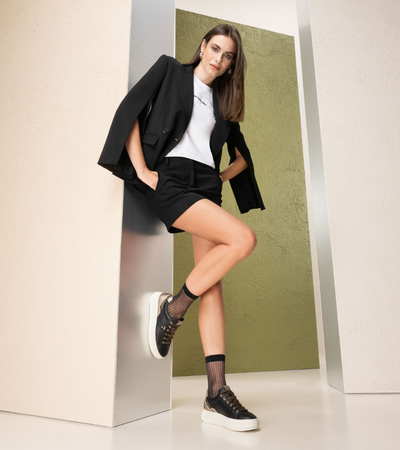Kids/Children's Foot Development
The foot is a complicated structure made up of 26 bones and 35 joints that are held together and supported by ligaments. A baby's foot is fat-padded and extremely flexible.
Most children start walking between the ages of 8 and 18 months. Most babies walk flat-footed or with their feet turned inwards because muscular strength and ligament stiffness must catch up to other developmental stages. The following is a list of things that can be done to help the situation.
If you are concerned about your child's feet or the way they walk, always consult a podiatrist or doctor (their gait).
Pre-Crawling
The term "baby" refers to a child's first year of life Their feet have not yet developed bones. Everything is formed of cartilage. Because the arches under their feet are still developing, their soles will be flat as well. It's crucial to allow the baby's feet to grow freely. Even tight-fitting socks can have an effect on foot growth.

Crawling
Nerve endings are growing and communicating with their brains to aid in balance. The cartilage-like tissue on their feet hardens into bone tissue as they put greater weight on them.
From now until they are about five years old, their feet will grow about two sizes per year.
First Walkers
Children typically take their first steps between the ages of 8 and 18 months. We propose that babies walk for 6-8 weeks before wearing shoes as their nerve ending are still developing. A toddler's flat feet are quite normal. Their arch will gradually expand as they get older. During this time, it appears that your child is outgrowing their shoes on a daily basis!
Preschool
Your child's feet will grow quite swiftly between the ages of 2-4. As the navicular bone hardens (ossifies) and the "baby fat" in the foot melts away, they begin to seem more mature. Your child's feet now have 45 individual bones, several of which will fuse together when they reach adolescence. There are several milestones to look forward to at this stage, such as running, climbing, jumping, and so on, putting additional demands on the longevity of their shoes.

School
By the time, your child is ready to start school, his or her feet will have altered considerably. Your child's feet will grow at a slower rate when the bones fuse and the arch forms, around one full size every year.
At this time, they should be at ease with the feel of shoes. This is not to say that you should disregard their feet. They will be on their feet more than ever before, therefore paying special attention to the durability and condition of their shoes is essential.
Adolescence
A child's foot stops "developing" in their late teens. At the same time, we develop our own style of walking (our gait). This is when the bones finish growing and solidifying, albeit at a slower rate than in earlier years. Because our feet are dynamic, they will respond to various situations. Our feet can continue to change shape even when their growth has stopped. Such as arches falling due to ageing, pregnancy, gaining weight, accidents, diabetes etc.
As you may have seen from the above, it is not only vital to discover the correct shoe size for your child; it is also critical to choose a shoe that fulfils the child's demands at each stage of growth and ensures the ideal blend of adjustability, flexibility, respirability, and fitness.
At Walsh Brothers Shoes we have a range of high-quality shoes that promote good foot development for all children.


